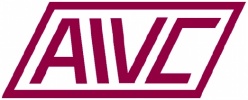There is a trend to perform more ventilation and air infiltration measurements in buildings, either to strengthen commissioning procedures or to learn from field data. This trend is stronger in nearly zero-energy buildings projects or programmes given the significant share of ventilation and infiltration losses on total building energy use.
Although there seems to be a general consensus on the benefits of this approach—e.g., in terms of attention paid to the execution, confidence in actual performance, monitoring of programmes and regulations—there are logically debates about the quality and cost of these measurements.
The objectives of this workshop were to review and to discuss:
- Recent and existing measurement methods for ventilation and air infiltration in buildings;
- Methods to estimate the uncertainty of those measurements;
- Conditions to obtain results whose quality is compatible with the purpose of the measurement;
- Conditions for large-scale implementation and pitfalls to avoid.
The workshop addressed primarily field measurement of airflow rates, air exchange rates, air velocities, and pressures. Discussions and presentations included laboratory measurements as well as methods for measuring air temperature, air humidity, contaminants, energy use and power related to ventilation and infiltration in buildings. The methods addressed natural, hybrid or mechanical ventilation, including ventilative cooling. Speakers gave background information on readily-available measurement techniques.





